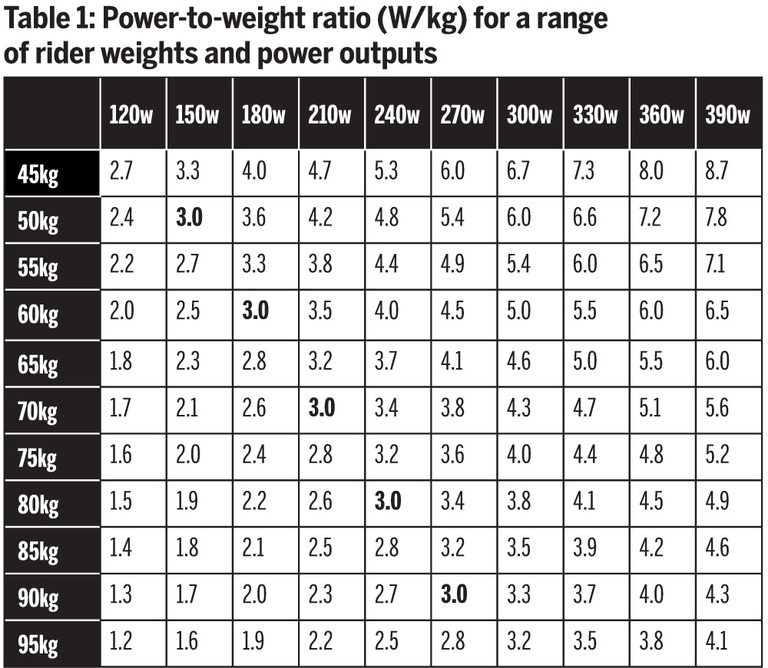What is Watts per Kilogram and Why Does it Matter?
In the world of cycling, watts per kilogram (W/kg) is a crucial metric that measures a cyclist’s power output relative to their body weight. This metric is essential in evaluating cycling performance and predicting success in competitive events. A higher W/kg ratio indicates a cyclist’s ability to generate more power per unit of body weight, which is a key determinant of their overall performance.
Watts per kg cycling is particularly important for professional cyclists, as it provides a standardized way to compare performances across different riders and events. For instance, a professional cyclist with a high W/kg ratio is more likely to excel in mountainous stages of the Tour de France, where power-to-weight ratio is crucial. Similarly, a cyclist with a lower W/kg ratio may struggle to keep up with their peers in such events.
For recreational cyclists, understanding watts per kilogram is equally important. By tracking their W/kg ratio, cyclists can set realistic training goals, monitor their progress, and make data-driven decisions to improve their performance. Moreover, W/kg provides a more accurate representation of a cyclist’s fitness level than traditional metrics like heart rate or speed, making it a valuable tool for cyclists of all levels.
How to Calculate Your Watts per Kilogram
To calculate your watts per kilogram, you’ll need to know your maximum power output in watts (W) and your body weight in kilograms (kg). This can be measured using a power meter on your bike or through a variety of fitness tests, such as the Wingate test or a maximal oxygen consumption (VO2max) test.
The formula to calculate watts per kilogram is simple: W/kg = Maximum Power Output (W) ÷ Body Weight (kg). For example, if your maximum power output is 250 watts and you weigh 70 kilograms, your W/kg ratio would be 3.57 W/kg.
Once you have your W/kg ratio, you can use it to set realistic training goals and track your progress over time. For instance, if you’re a recreational cyclist looking to improve your performance, you may aim to increase your W/kg ratio by 0.5 W/kg over the course of a few months. By tracking your progress and adjusting your training accordingly, you can optimize your watts per kg cycling and reach your full potential.
Additionally, understanding your W/kg ratio can help you identify areas for improvement in your training. For example, if you have a low W/kg ratio, you may need to focus on building your power output through high-intensity interval training or strength training. On the other hand, if you have a high W/kg ratio, you may need to focus on improving your endurance and efficiency through longer, steady-state rides.
The Relationship Between Watts per Kilogram and Cycling Efficiency
A higher watts per kilogram ratio is not only a measure of a cyclist’s power output, but also a key indicator of their overall cycling efficiency. Cycling efficiency refers to the ability to convert energy into forward motion, with minimal energy wasted on unnecessary movements or resistance. A higher power-to-weight ratio can significantly improve a cyclist’s efficiency, allowing them to maintain higher speeds with less effort.
Several factors contribute to cycling efficiency, including aerodynamics, rolling resistance, and pedaling technique. Aerodynamics play a crucial role, as a cyclist’s body position and bike design can greatly impact air resistance. Rolling resistance, which includes factors like tire pressure and road surface, also affects efficiency. Finally, pedaling technique is essential, as a smooth and efficient pedaling motion can help reduce energy waste.
In watts per kg cycling, a higher power-to-weight ratio can help mitigate the negative effects of these factors. For example, a cyclist with a high W/kg ratio can maintain a higher speed on a flat course, despite facing similar aerodynamic and rolling resistance forces as a cyclist with a lower W/kg ratio. This is because they are able to generate more power relative to their body weight, allowing them to overcome these resistive forces more efficiently.
Furthermore, a higher watts per kilogram ratio can also improve a cyclist’s ability to climb hills and mountains. By generating more power relative to their body weight, cyclists can maintain a higher speed on inclines, reducing the time and energy required to complete a climb. This is particularly important in professional cycling, where small advantages in efficiency can make a significant difference in overall performance.
Watts per Kilogram Benchmarks for Cyclists
Understanding watts per kilogram benchmarks is essential for cyclists to evaluate their performance and set realistic goals. These benchmarks vary depending on the cycling discipline, fitness level, and other factors. Here are some general guidelines to help cyclists assess their watts per kg cycling performance:
For recreational cyclists, a watts per kilogram ratio of 2.0-3.0 W/kg is considered average, while 3.0-4.0 W/kg is above average. Competitive cyclists typically fall in the 4.0-5.0 W/kg range, with elite professionals often exceeding 6.0 W/kg.
In specific cycling disciplines, benchmarks may differ. For example, in road cycling, a watts per kilogram ratio of 5.0-6.0 W/kg is considered elite, while in mountain biking, a ratio of 4.0-5.0 W/kg is considered high-level. In track cycling, where short, intense efforts are required, a watts per kilogram ratio of 7.0-8.0 W/kg or higher is not uncommon.
These benchmarks can help cyclists identify areas for improvement and set realistic goals. For instance, a recreational cyclist with a watts per kilogram ratio of 2.5 W/kg may aim to increase their ratio to 3.5 W/kg over the course of a few months. By tracking progress and adjusting training accordingly, cyclists can optimize their watts per kg cycling and reach their full potential.
It’s essential to note that watts per kilogram benchmarks are not the only measure of a cyclist’s performance. Other factors, such as endurance, pedaling technique, and overall fitness, also play a critical role in determining success in competitive events.
Training Strategies to Improve Your Watts per Kilogram
To improve watts per kg cycling, cyclists need to focus on training strategies that increase their power output while minimizing weight gain. Here are some effective training strategies to help cyclists achieve this goal:
High-Intensity Interval Training (HIIT): This involves short, intense bursts of effort followed by active recovery. HIIT is effective in improving anaerobic capacity, which is critical for generating high power outputs. Examples of HIIT workouts include sprint intervals, hill repeats, and prologue simulations.
Strength Training: Building muscular strength, particularly in the legs, is essential for generating power on the bike. Focus on exercises like squats, lunges, and leg press to build strength. Additionally, incorporate core and upper body exercises to improve overall stability and endurance.
Endurance Exercises: While high-intensity efforts are crucial for improving watts per kg cycling, endurance exercises are also essential for building the aerobic base necessary for sustained efforts. Incorporate longer, steady-state rides into your training program to improve cardiovascular fitness and increase muscular endurance.
Plyometric and Neuromuscular Training: Plyometric exercises, such as jump squats and box jumps, can help improve explosive power. Neuromuscular training, which focuses on the connection between the nervous system and muscles, can also enhance power output. Examples of neuromuscular exercises include resisted sprints and isometric holds.
Incorporating these training strategies into a well-structured program can help cyclists improve their watts per kg cycling and achieve their performance goals. It’s essential to remember that individualized training programs, tailored to a cyclist’s specific needs and goals, are more effective than generic training plans.
By incorporating these training strategies and focusing on watts per kg cycling, cyclists can optimize their performance, gain a competitive edge, and reach their full potential.
The Role of Nutrition and Recovery in Optimizing Watts per Kilogram
When it comes to optimizing watts per kg cycling, nutrition and recovery play a critical role in supporting a cyclist’s training and performance. A well-planned nutrition strategy can help cyclists fuel their bodies for optimal performance, while a recovery plan can aid in repairing and adapting to the demands of intense training.
Proper nutrition is essential for providing the energy and nutrients necessary for high-intensity training. Cyclists should focus on consuming a balanced diet that includes complex carbohydrates, lean protein, and healthy fats. Additionally, staying hydrated by drinking plenty of water is crucial for maintaining performance and preventing dehydration.
In terms of specific nutrition strategies, cyclists can benefit from periodized nutrition planning, which involves tailoring their diet to specific training phases. For example, during high-intensity training periods, cyclists may need to increase their carbohydrate intake to support energy demands. During recovery periods, a focus on protein-rich foods can aid in muscle repair and rebuilding.
Recovery is also a critical component of optimizing watts per kg cycling. Adequate rest and recovery allow cyclists to adapt to the demands of training, rebuild muscle tissue, and replenish energy stores. Strategies such as foam rolling, stretching, and self-myofascial release can help reduce muscle soreness and improve recovery. Additionally, incorporating rest days or active recovery days into a training program can help cyclists avoid burnout and maintain consistency.
By prioritizing nutrition and recovery, cyclists can optimize their watts per kg cycling and achieve their performance goals. A well-planned nutrition strategy and recovery plan can help cyclists train more effectively, recover more efficiently, and ultimately reach their full potential.
Real-World Examples of Elite Cyclists’ Watts per Kilogram
To illustrate the importance of watts per kg cycling, let’s take a look at some real-world examples of elite cyclists’ power output. Professional cyclists like Chris Froome, Geraint Thomas, and Tom Dumoulin have all demonstrated exceptional watts per kg cycling during notable races and events.
For example, during the 2015 Tour de France, Chris Froome averaged an impressive 6.25 watts per kg cycling during the individual time trial stage. This exceptional power output allowed him to maintain a high speed over a prolonged period, ultimately securing his victory in the general classification.
In another example, Geraint Thomas’s watts per kg cycling played a crucial role in his victory at the 2018 Tour de France. During the mountainous stages, Thomas averaged around 6.5 watts per kg cycling, allowing him to stay with the lead group and eventually take the overall win.
Tom Dumoulin, a time trial specialist, has also demonstrated remarkable watts per kg cycling. During the 2017 World Championships time trial, Dumoulin averaged an incredible 7.1 watts per kg cycling, earning
Real-World Examples of Elite Cyclists’ Watts per Kilogram
To illustrate the importance of watts per kg cycling, let’s take a look at some real-world examples of elite cyclists’ power output. Professional cyclists like Chris Froome, Geraint Thomas, and Tom Dumoulin have all demonstrated exceptional watts per kg cycling during notable races and events.
For example, during the 2015 Tour de France, Chris Froome averaged an impressive 6.25 watts per kg cycling during the individual time trial stage. This exceptional power output allowed him to maintain a high speed over a prolonged period, ultimately securing his victory in the general classification.
In another example, Geraint Thomas’s watts per kg cycling played a crucial role in his victory at the 2018 Tour de France. During the mountainous stages, Thomas averaged around 6.5 watts per kg cycling, allowing him to stay with the lead group and eventually take the overall win.
Tom Dumoulin, a time trial specialist, has also demonstrated remarkable watts per kg cycling. During the 2017 World Championships time trial, Dumoulin averaged an incredible 7.1 watts per kg cycling, earning






